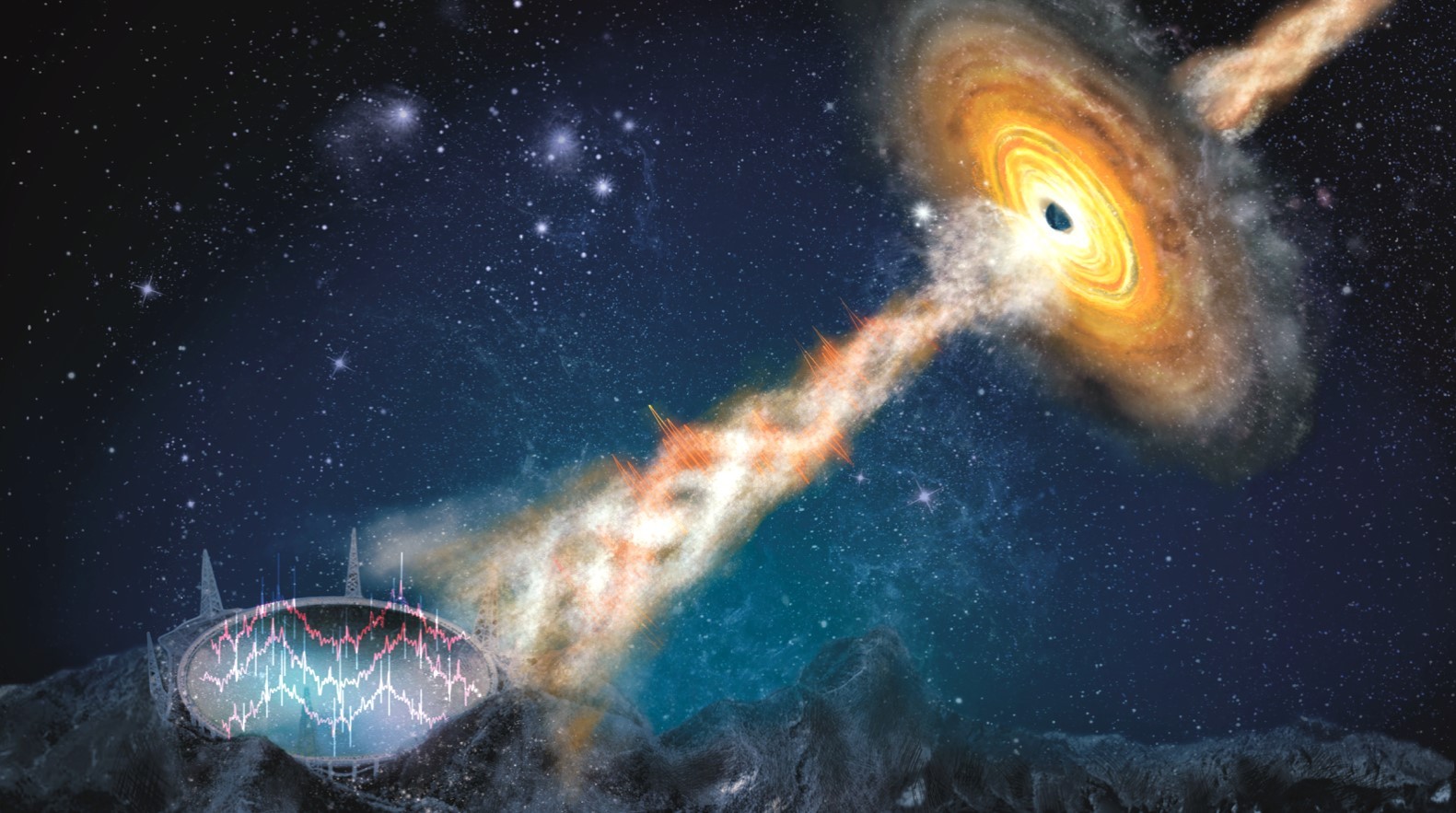
An illustration of China's FAST to detect signals from space. /China Media Group
An illustration of China's FAST to detect signals from space. /China Media Group
An international research team led by Chinese astronomers revealed the complex dynamic features of the relativistic jets of a black hole, according to a study published in the journal Nature on Wednesday.
Powerful relativistic jets are one of the features of accreting black holes, and GRS 1915+105 is a well-known fast-spinning black-hole X-ray binary with a relativistic jet, termed a "microquasar," as indicated by its superluminal motion of radio emission, according to the study.
It has exhibited persistent X-ray activity over the last 30 years, with quasiperiodic oscillations in the X-ray band.
From 2020 to 2022, researchers from the Department of Astronomy of Wuhan University, the National Astronomical Observatories of the Chinese Academy of Sciences, and other institutions employed China's Five-hundred-meter Aperture Spherical Radio Telescope (FAST), the world's largest single-dish radio telescope, to observe the radio continuous spectrum light change and polarization of GRS 1915+105.
With FAST's high sampling and sensitivity, the research team detected two instances of transient periodic oscillations of about 0.2 seconds each in January 2021 and June 2022.
The transient periodic oscillations remain unstable and unable to be detected most of the time. They are therefore called quasiperiodic oscillations.
This is the first time that sub-second low-frequency radio quasiperiodic oscillations in a microquasar have been observed in the world, which also directly links the phenomenon with relativistic jets.
It is of great scientific significance to reveal the origin and dynamic process of relativistic radio jets of super-dense celestial bodies, which will open up a new avenue for radio observation and theoretical research of black holes.

China's FAST is located in a naturally deep and round karst depression in the southwestern province of Guizhou. /CFP
China's FAST is located in a naturally deep and round karst depression in the southwestern province of Guizhou. /CFP
China's FAST started formal operation in January 2020 and officially opened to the world on March 31, 2021. It has received applications from 16 countries and approved a total of nearly 6,400 hours for observation.
The application items mainly involve fast radio bursts' observation, pulsars' observation and neutral hydrogen survey.
Its operation and maintenance team has been working to further improve its observation efficiency and meet the growing demand from the international astronomical community.
Intelligent robots adopted in maintenance
Also on Wednesday, local authorities said five intelligent robot systems and platforms for the maintenance of FAST have passed inspection and can be put into use.
They will be mainly used in testing of the supporting cables and pulleys of FAST's feed, the automatic maintenance of its actuators and laser targets on the reflector, the disassembling and installation of feed receivers, the monitoring of radio interference and the all-weather measurement of its 30-tonne feed cabin.
Dubbed the "China Sky Eye," the telescope is located in a naturally deep and round karst depression in the country's southwest Guizhou Province with a reception area equal to 30 standard football fields.
The intelligent robots will help safeguard the telescope's operation, increasing its observation duration and efficiency while promoting more scientific results, said Jiang Peng, chief engineer of FAST.
"The intelligent robots are expected to add about 30 days to the telescope's observation period annually," said Jiang.
Read more: China's gigantic telescope identifies over 800 pulsars
Source(s): Xinhua News Agency